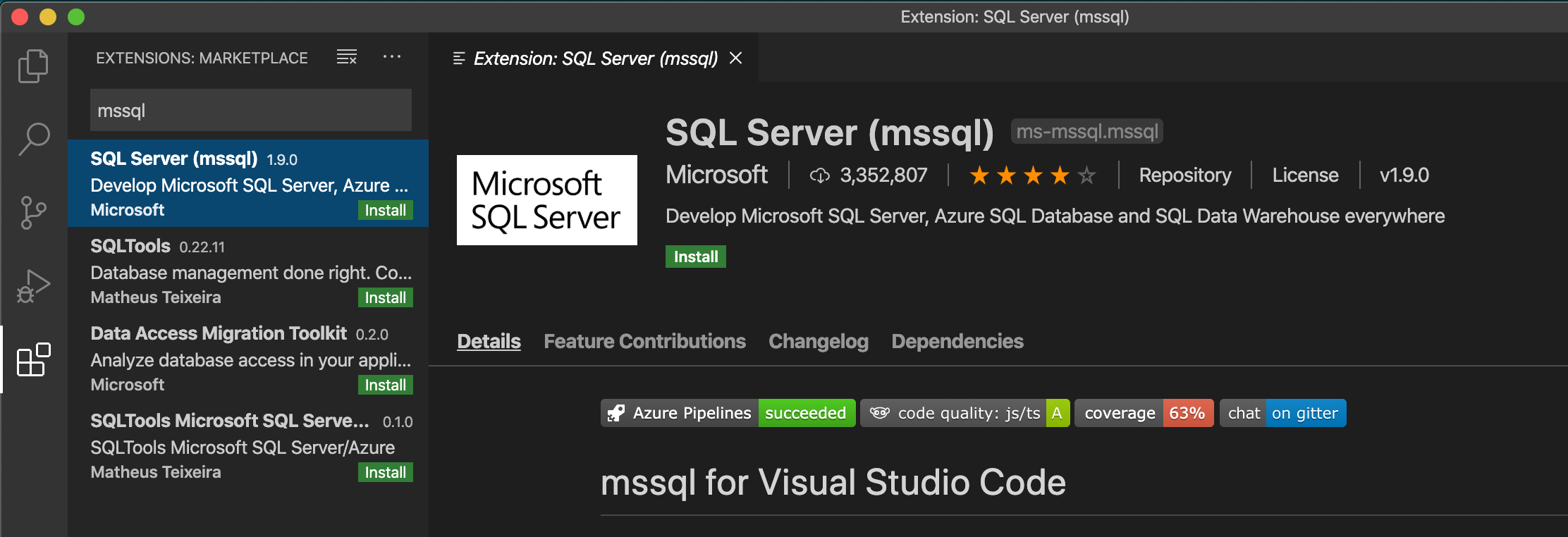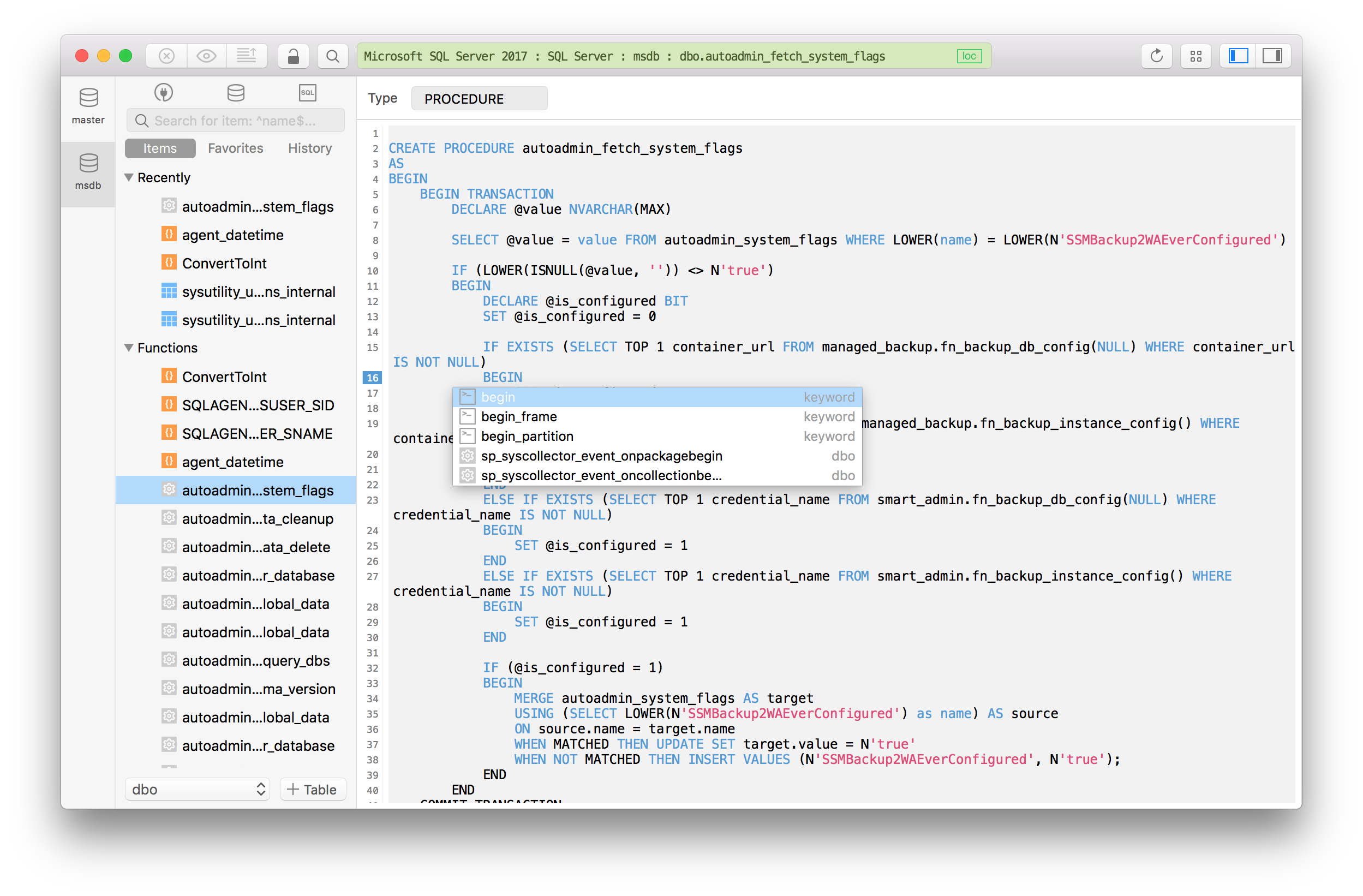
- Microsoft sql server for mac install#
- Microsoft sql server for mac drivers#
- Microsoft sql server for mac driver#
The following table shows the minimum supported versions of OpenSSL and the default Certificate Trust Store locations for each platform: Platform TLS on Linux and macOS uses the OpenSSL library. In strict encryption mode, the certificate is always verified. However, if you connect to a server that has a self-signed certificate, and aren't using strict encryption mode, you can add the TrustServerCertificate option to bypass checking the certificate against the list of trusted certificate authorities: Driver= Server=ServerNameHere Encrypt=YES TrustServerCertificate=YES When using connection encryption, the name (or IP address) in a Subject Common Name (CN) or Subject Alternative Name (SAN) in a SQL Server TLS/SSL certificate should exactly match the server name (or IP address) specified in the connection string.īy default, encrypted connections always verify the server's certificate. Strict is only available against servers that support TDS 8.0 connections.
Microsoft sql server for mac driver#
ODBC Driver 18 and newer Encrypt Settingĭata sent between client and server isn't encrypted.ĭata sent between client and server is encrypted.

The following tables show the effect of the Encrypt and TrustServerCertificate settings. Regardless of the settings for Encrypt and TrustServerCertificate, the server login credentials (user name and password) are always encrypted. TLS also verifies the identity of the server to protect against man-in-the-middle (MITM) attacks.Įnabling encryption increases security at the expense of performance.įor more information, see Encrypting Connections to SQL Server and Using Encryption Without Validation. TLS protects SQL Server user names and passwords over the network. You can use Transport Layer Security (TLS), previously known as Secure Sockets Layer (SSL), to encrypt connections to SQL Server. You can verify that your driver is working by using isql to test the connection, or you can use this command: bcp master.INFORMATION_SCHEMA.TABLES out OutFile.dat -S -U -P For entries in the odbc.ini file specific to the ODBC Driver for SQL Server, see DSN and Connection String Keywords and Attributes for ones supported on Linux and macOS. Connecting to a dynamic port isn't supported before version 17.4.Īlternatively, you can add the DSN information to a template file, and execute the following command to add it to ~/.odbc.ini : odbcinst -i -s -f įor complete documentation on ini files and odbcinst, see the unixODBC documentation. To connect to a named instance on a static port, use Server= servername, port_number.
Microsoft sql server for mac drivers#
The only protocol supported by the Linux and macOS drivers is tcp. For example, Server=tcp: servername ,12345. You can optionally specify the protocol and port to connect to the server. The above connection string would be the equivalent of specifying a connection string without the DSN keyword like: Driver=ODBC Driver 17 for SQL Server Server=tcp:localhost,1433 UID=my_username PWD=my_password To connect using the above DSN in a connection string, you would specify the DSN keyword like: DSN=MSSQLTest UID=my_username PWD=my_password # for the Microsoft ODBC driver on Linux or macOS # Port isn't a valid keyword in the odbc.ini file odbc.ini in your home directory) for a User DSN only accessible to the current user, or /etc/odbc.ini for a System DSN (administrative privileges required.) The following odbc.ini is a sample that shows the minimal required entries for a DSN: # To create a DSN, create (if necessary) and edit the file ~/.odbc.ini (. You can use a DSN to define connection string keywords under a DSN name that you can then reference in the connection string.

Microsoft sql server for mac install#
ini file used to install the driver.ĭSNs are optional. The path to the driver library, which was specified in the template. The name you used when you installed the driver.

The value passed to the Driver keyword can be one of the following:

Instead, send a use database_name command to connect to the database before executing your queries. When connecting to a database that uses database mirroring (has a failover partner), do not specify the database name in the connection string.


 0 kommentar(er)
0 kommentar(er)
